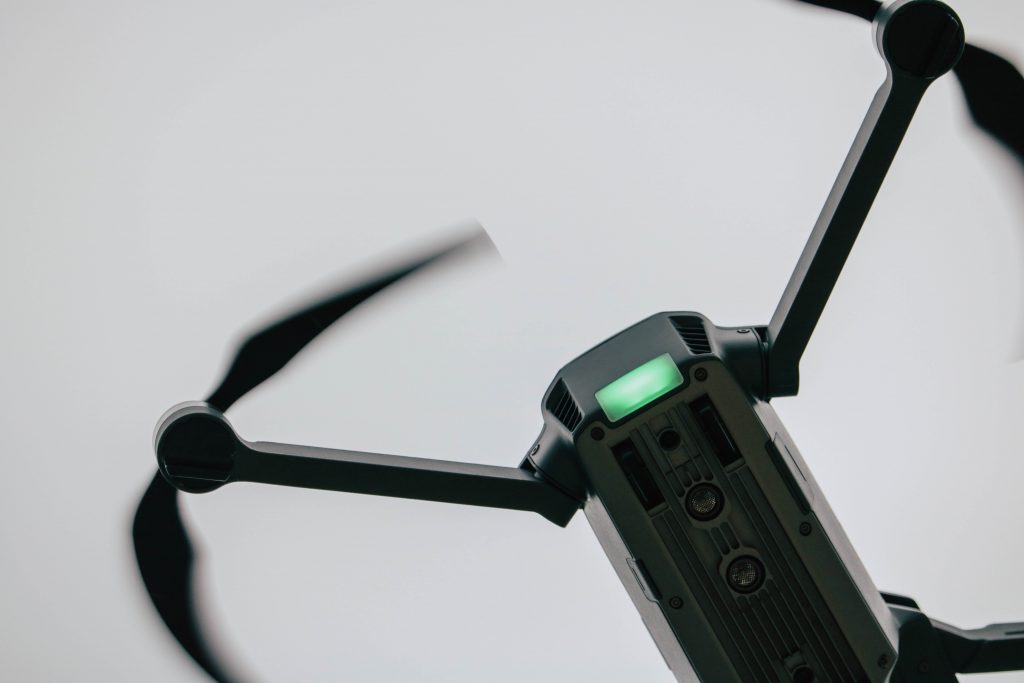
Robohub.org
How drones for organ transportation are changing the healthcare industry

Source: Unsplash
According to statistics, the healthcare drone industry has witnessed a dramatic surge in the last couple of years. In 2020, the market grew 30% and is expected to grow from $254 million in 2021 to $1,5 billion in 2028. The most common use case for healthcare drones is the delivery of medical supplies and laboratory samples.
However, it appears that in 2022, new ways of using drones have become available. Research groups in the USA have completed test drone organ delivery operations and have done so successfully. How will the proliferation of organ transportation with drones influence the healthcare industry?
What is an organ transportation drone?
Before we talk about how medical delivery drones may influence the healthcare industry, it’s worth investigating what they are and how they work.
Drones are unmanned aerial vehicles (UAVs) that can be operated remotely or that can fly autonomously using on-board sensors and GPS. The smallest drones can be as small as 30sm in length and weigh about 500 grams. The largest can reach the size of a track and carry weights up to 4.5 tons.
Drones for organ transportation are somewhere in the middle. Organs are usually delivered in batches and can actually be quite heavy with all the ecosystem that is necessary to maintain them in the desired condition. Organ delivery drones are able to carry freight up to 180kg. These drones are designed to transport vital organs such as hearts, kidneys, and livers from one location to another in a safe and efficient manner.
Drones are able to transport objects on relatively short distances. While iner-city and inter-city delivery is possible it’s probably too early to talk about international transportation. This limitation can be explained by the difficulties of piloting the drone as well as by the nature of organ transplantation as such that is an extremely timely matter.
Why are organ transportation drones so important?
Right now organ delivery drones are still on the stage of development and testing. However, a survey conducted among surgeons in the USA has shown that this innovation may have high importance for the field.
A survey by University of Maryland Medical Center in Baltimore has shown that 76.4% of organ transplantation surgeons believe that cold ischaemia time reduction to 8 hours, achieved via the use of organ delivery drones, would increase organ acceptance rates. In fact, time to delivery reduction is one of the most significant benefits of using drones for the delivery of organs. After the organs have been extracted from the body, they only have 4 to 72 hours to be transplanted. The longer the waiting time the higher are the chances of the organ failing upon transplantation. Only 16% of surgeons believed the current transportation system is adequate for organ delivery needs. Clara Guerrero, director of communications for the Texas Organ Sharing Alliance, says in the article for San Antonio Report, ‘You’re saving hours. What that also means is the organ is more viable. That person, they don’t have to wait so long for the organ to arrive. We’re saving lives faster and sooner’.
Another research has investigated the potential drawbacks and benefits of using organ transportation drones as opposed to delivery with commercial aircrafts and charter flights. They have used a modified, six-rotor UAS to model organ delivery. During the transportation process, they’ve measured the temperature and vibration levels. This is what they write:
“Temperatures remained stable and low (2.5 °C). Pressure changes (0.37–0.86 kPa) correlated with increased altitude. Drone travel was associated with less vibration (<0.5 G) than was observed with fixed-wing flight (>2.0 G). Peak velocity was 67.6 km/h (42 m/h). Biopsies of the kidney taken prior to and after organ shipment revealed no damage resulting from drone travel. The longest flight was 3.0 miles, modeling an organ flight between two inner city hospitals.”
In the future, the use of drones for organ transportation could greatly increase as the technology improves. For example, advances in autonomous flight systems and improved battery technology could make it possible for drones to fly longer distances and reach more remote locations. Additionally, the development of drone delivery networks could make it possible to deliver organs to hospitals and other healthcare facilities in a matter of minutes, reducing the time that vital organs are outside of a human body.
Who makes drones for organ transportation?
Currently, there are several companies in the world that are working on making organ transplantation a reality.
One such company is Zipline, based in California, USA. The company has developed a drone specifically for the transportation of medical supplies, including blood and organs. The drone is able to fly at high speeds and cover long distances, making it ideal for transporting organs between hospitals and other medical facilities.
Another company, Matternet, is also based in California and it has developed a similar drone for medical deliveries. This drone is used to deliver diagnostic samples in Switzerland and can be applied for carrying small organs as well.
A Canadian company Unither Bioélectronique specializes in quick and efficient delivery methods for organ transportation such as drones. The Indian government is developing an organ delivery drone system together with.
In China, a company called EHang has developed a drone that can transport organs and other medical supplies. This drone is able to fly at high speeds and cover long distances, making it ideal for transporting organs between hospitals and other medical facilities.
In Europe, a company called Volocopter, based in Germany, has developed a drone specifically for the transportation of organs. The drone is equipped with advanced navigation systems and can fly at high speeds, making it ideal for transporting organs between hospitals and other medical facilities.
In India, the first human organ delivery drone developed by MGM Healthcare. It can be used to transport organs with a maximum distance of 20 kilometers.
Conclusion
The use of organ drone delivery represents a significant breakthrough in the field of organ transplantation. This innovative technology has the potential to revolutionize the way organs are transported, making the process faster, more efficient, and more reliable than ever before. By reducing the time it takes to deliver organs to transplant centers, drones could help save countless lives by ensuring that patients receive the organs they need in a timely manner. Moreover, by reducing the risk of organ damage during transport, drones could improve the success rates of organ transplants, leading to better outcomes for patients. With the ongoing development of organ drone delivery technology, we can look forward to a future where organ transplantation is more accessible, reliable, and effective than ever before.
tags: c-Health-Medicine






